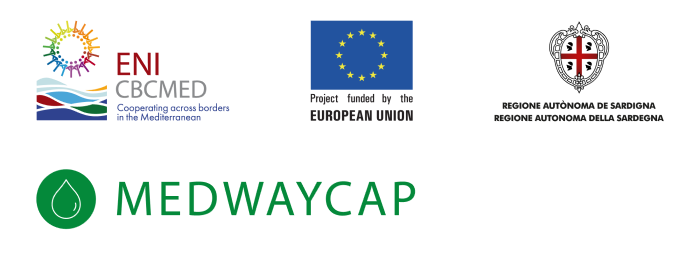First Name:
Alessandra
Last Name:
Paulotto
Type of BP
Technical solution
Typology of Non- Conventional Water Resources (NCWR) What kind of NCWR do you deal with ?:
Irrigation Drainage Water (DW)
What are the challenges raised by your Best Practice?
Environmental pollution, Overexploited groundwater, Inadequate strategy
How could you describe your Best Practice?
FIA is a system of parallel drainage trenches placed between rows of various trees and/or shrubs species equipped with an innovative Passive Treatment System consisting of a layer of inert materials (gravel and sand) and a reactive layer (an homogeneus mixture of inert and organic materials), aimed at reducing inorganic and organic contaminants, promoting processes under different redox conditions, and at preventing clogging at the infiltrating surface. In the Nitrate Vulnerable Zone (NVZ) of Arborea, the FIA system aims at mitigating the groundwater nitrate contamination for the phreatic sandy aquifer.
Please describe your Best Practice in 5 keywords?
Managed Aquifer Recharge, Nitrate contamination mitigation, Groundwater availability increase, Drainage water as recharge water, Passive Treatment System.
Please provide any links to useful documentations (including website)presenting your Best Practice
In which area has your Best Practice been implemented ?
Rural area, Agricultural area, Other (Please specify below)
Other area
Nitrate Vulnerable Zone
Best Practice location implementation (Country)
Italy
Localisation
POINT (12.56738 41.87194)
Who are the beneficiaries and/or the target group of your Best Practice ?
Water Utilities, Local Population, Municipalities, Farmers, Householders, Management Authorities
f the Best Practice has been implemented within a partnership, who were your partners ?
The BP has been implemented within the project MENAWARA consortium consisting of NRD-UNISS (IT), CIHEAM BARI (IT), WW-GVC (PS), NARC (JO), ONAS (TN) and CENTA (ES)
Have you involved stakeholders?
Yes
Please list them
Yes. Oristanese Land Reclamation Consortium, Farmers' Cooperative of Arborea, Regional Agency of the Hydrographic District (ADIS), the Regional Environmental Agency (ARPAS), the Regional Agency of Agricultural Policies Application and Rural Development (LAORE), Municipality of Arborea.
What are the obstacles to implementation of Best Practice ?
Lack of an adequate regulatory framework, Other (Please specify below)
Other obstacles
As the BP is innovative in Sardinia, it didn't fit in a clear regulatory framework. Many local authorities were engaged to provide their authorisation to proceed.
Did you receive funding for the research and development of the proposed BP?
Yes
Please indicate the source of funding
EU funding
What difficulties you have faced to access the funding ?
Delays in the implementation of the BP (unclear regional legislation, which made the attribution of competences complicated and required the intervention of numerous local authorities called to provide their authorization).
Has your Best Practice been validated/upscaled?
No
Is there the potential to exploit/outscale the Best Practice?
Yes, in similar hydrogeological context.
Do you have or know any platform of sharing Best Practice that you would like to link to this inventory platform?
No
Does your Best Practice contribute to an innovation? If so, please provide a short description of the innovative component
Compared to the FIA systems which have already been implemented in Veneto, the FIA under implementation in Arborea includes a technical innovation represented by the Passive Treatment System to be installed within each recharge trench to improve the recharge water quality and reduce the clogging processes at the infiltrating surface.
What technolog(ies) and/or tool(s) has(ve) been used for your Best Practice ?
For the design of the passive treatment system, batch and flow-through experiments have been carried
Please indicate the acronyms of used &/or developed technologies/Tools
_
Please indicate the TRL associated with your Best Practice
TRL4 : Technology validated in lab
Flow rate (m3/day)
1917.00
Flow rate
Around 700.000 m3/year to recharge the aquifer (Estimation)
What is the necessary area to implement your Best Practice (m2) ?
5000.00
What is the necessary area to implement your BP ?
At least 5000 m2
Salinity (mg/l)
1216.00
Comment : Salinity
EC:1900µS/cm (1.9dS/m) Salinity : 1.9*640=1216mg/L
COD (mg/l), Chemical Oxygen Demand
30.00
Comment : COD
Electrical conductivity: 1900 microS/cm
BOD5 (mg/l)
10.00
Comment : Phosphorus content
2 mg/l
70 mg/l NO3, 1 mg/l NO2, 0 mg/l NH3
Flow rate (m3/day) of treated NCW
1917.00
Flow rate of treated NCW
Around 700.000 m3/year to recharge the aquifer (estimation)
What is the impact on the beneficiaries of your Best Practice ?:
The BP is one of the mitigation option to reduce nitrate contamination in NVZ. In long term it can contribute to solving the groundwater pollution issue, which currently entails (due to the application of the Nitrate Directive) a series of constraints on the economic activity of farmers (eg. increase in production costs).
Total Cost (€):
110000.00
Comment : O&M Cost:
not yet available
Capital Cost
Not necessary
Ground Water Recharge
Not applicable
Price of treated NCW
Not applicable
How your Best Practice is economically feasible ?
Use of low cost materials that can be easily found in the local market.
Is your Best Practice economically viable ?
10
Is your Best Practice environmentally sustainable ?
10
Please indicate the other various social impact of your Best Practice :
Preservation of living environment, Sustaining natural ecosystems
To which Sustainable Development Goals (SDGs) your Best Practice contributes?
SDG6: Clean Water and Sanitation, SDG15: Life on Land
It is possible to adopt low-cost nature based solution to have a positive impact on the environment.
Have you any recommendation to add?
Before designing such a kind of system it is necessary to have a complete knowledge framework in terms of geology, hydrogeology and hydrogeochemistry in order to understand if the area meets the minimum requirements to be eligible for such an intervention.
